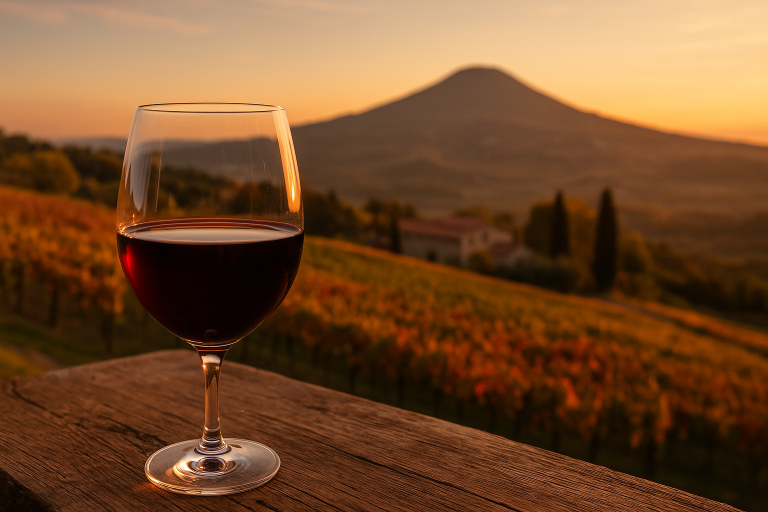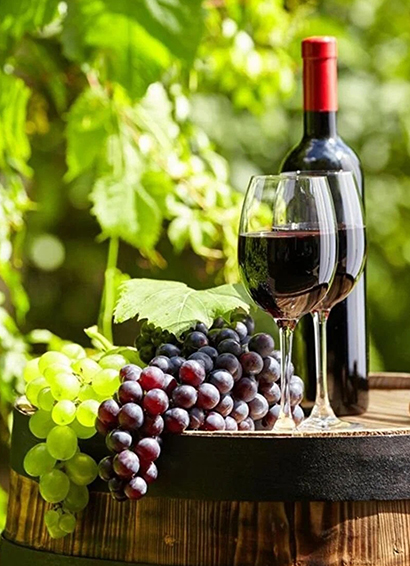Rich, velvety, and irresistibly smooth, Malbec has become one of the most beloved red wines in the world — known for its deep color, juicy fruit flavors, and plush texture. Though it originated in France, Malbec found its true home under the high-altitude sun of Argentina, where it blossomed into the vibrant, full-bodied style that wine lovers cherish today.
A Brief History
Malbec’s story begins in southwestern France, where it was historically grown in Bordeaux and Cahors. Known locally as Côt or Auxerrois, the grape contributed deep color and tannic strength to Bordeaux blends. However, it was temperamental — sensitive to frost and mildew — and gradually lost favor in France after devastating frosts in the 1950s.
In the mid-19th century, a French agronomist named Michel Pouget brought Malbec vines to Argentina. The country’s high-altitude vineyards in the Andes foothills proved to be the perfect environment — plenty of sunshine, dry air, and rocky soils that limited disease. Here, Malbec thrived, producing wines of remarkable purity, color, and softness.
By the late 20th century, Argentina had embraced Malbec as its flagship varietal, turning what was once a blending grape into a symbol of national pride. Today, Argentina is the world’s leading producer of Malbec, exporting its lush, fruit-driven wines to every corner of the globe.
Where It’s Grown
While Argentina dominates production — especially in Mendoza, Salta, and Patagonia — Malbec continues to grow in several other regions worldwide.
- France: The Cahors AOC produces a more rustic, tannic version known for black fruit, leather, and spice.
- United States: In California and Washington State, Malbec delivers ripe, New World fruit with balanced structure.
- Chile: Produces supple, fresh Malbecs often blended with Syrah or Carmenère.
- South Africa & Australia: Offer modern, fruit-forward takes with a hint of smoky richness.
No matter where it’s grown, Malbec always reflects its terroir — sun, soil, and altitude shaping its personality.
Tasting Notes
Malbec is typically medium to full-bodied, with plush tannins and moderate acidity, making it both flavorful and approachable. Its deep violet hue hints at what’s inside: bold flavors of black plum, blackberry, and blueberry, accented by cocoa, vanilla, and a touch of spice.
Argentinian Malbecs tend to be fruit-forward and smooth, with soft tannins and a long, velvety finish. French versions from Cahors are darker, firmer, and more structured, with earthy and savory notes. When aged in oak, Malbec develops additional layers of mocha, tobacco, and leather.
Serve Malbec slightly below room temperature (around 60–65°F) and decant for 20–30 minutes to open its aromatics. It pairs beautifully with grilled meats, empanadas, barbecued ribs, roasted vegetables, and aged cheeses — especially those with smoky or savory character.
The Essence of Malbec
Malbec’s appeal lies in its harmony — the perfect balance of fruit, texture, and depth. It’s a wine that feels generous yet refined, vibrant yet comforting. Whether you prefer the rustic power of Cahors or the sunlit elegance of Mendoza, Malbec captures the best of both worlds: the tradition of the Old and the energy of the New.
With every glass, Malbec reminds us why it has risen from obscurity to become a modern classic — the dark jewel of the wine world.








One Comment